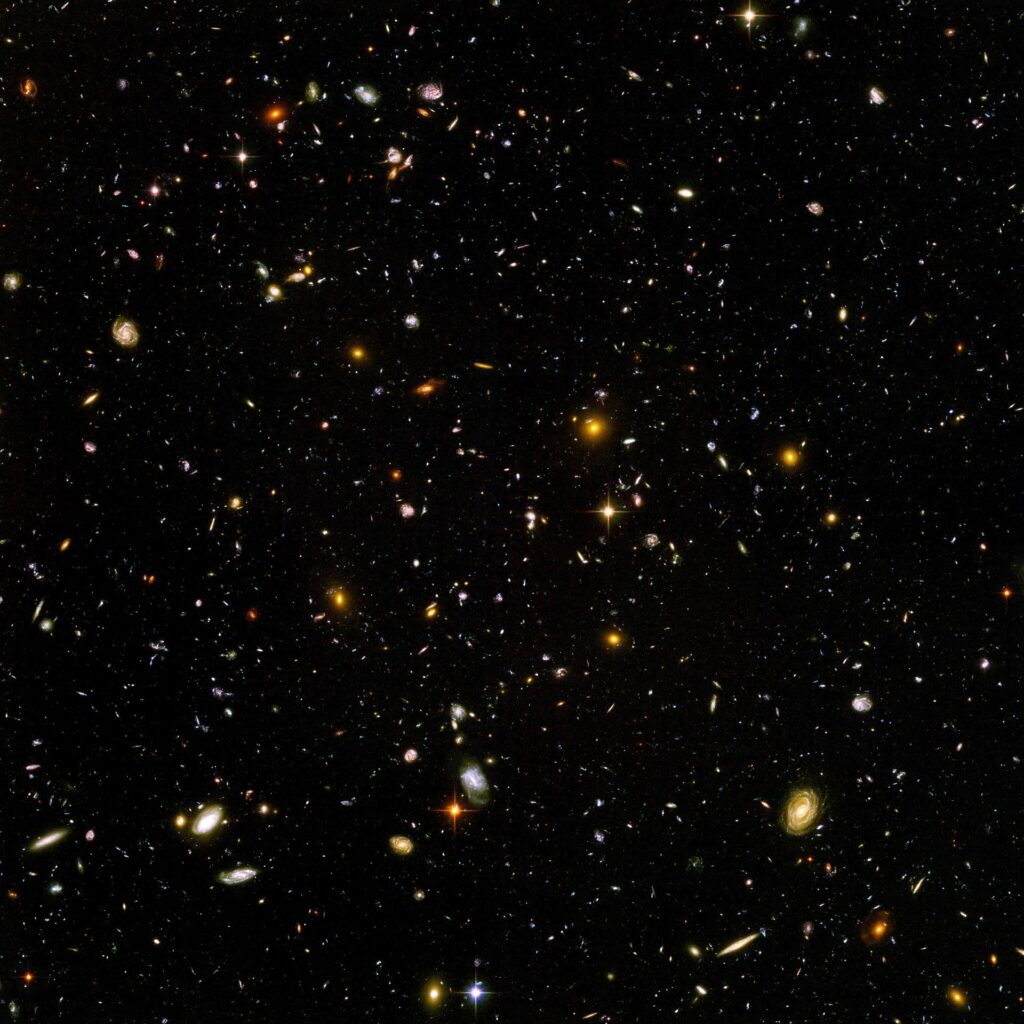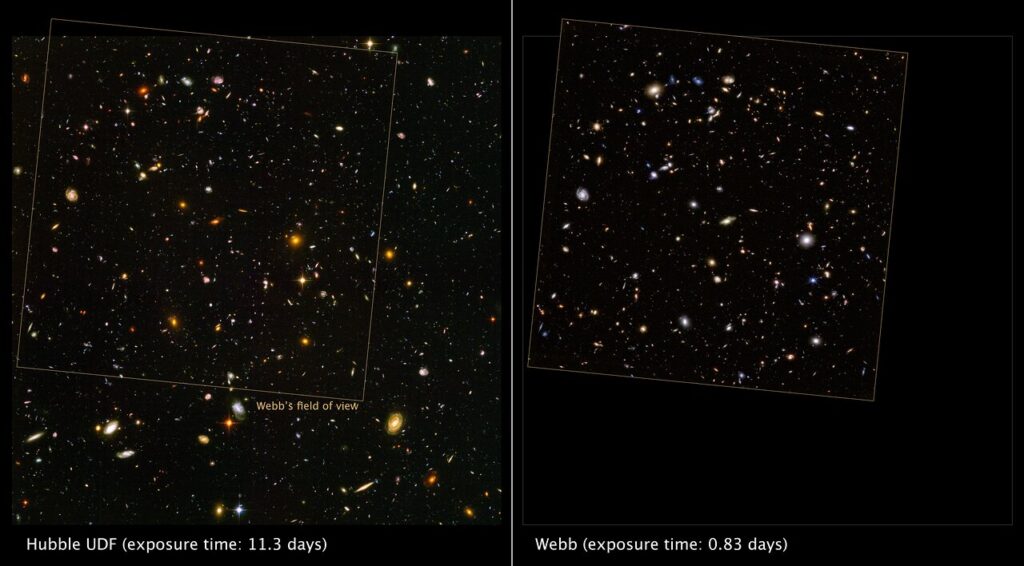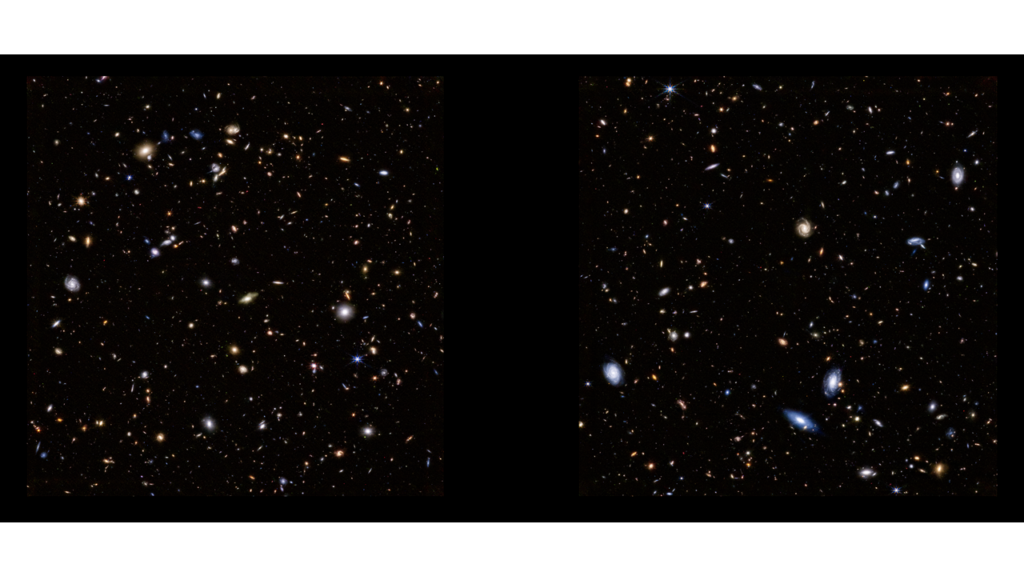NASA has released a new image taken by the James Webb Space Observatory (JWST). On it, you can see a section of the sky that became famous thanks to the Hubble telescope photography.
Historical image of the Hubble Telescope
In 1995, astronomers conducted one of the most famous experiments involving the Hubble Telescope. They photographed a small and, as previously thought, almost deserted area of the sky in the constellation Ursa Major. The results of the experiment amazed scientists. The Hubble image captured three thousand galaxies located hundreds of millions and billions of years away from the Milky Way. The image was named Hubble Deep Field.

In 2004, astronomers repeated the experiment using a new camera installed on Hubble by the maintenance expedition. This time, the telescope photographed an “empty” section of the sky in the constellation Fornax. After processing the image, astronomers counted about 10 thousand different galaxies on it. The most distant ones are at the very edge of the observable Universe. We see them as they were just a few hundred million years after the Big Bang. The image was named Hubble Ultra Deep Field.
James Webb’s New Record
Given the importance of the Hubble Ultra Deep Field for science, it is not surprising that the area captured on it has become one of the primary goals for JWST. On October 11, 2022, the telescope photographed this area.

According to mission specialists, the results of the photography and the image quality exceeded their expectations. JWST managed not only to capture numerous galaxies, but also clouds of ionized gas filling the intergalactic space. At the same time, the photography was much easier for JWST than Hubble. At one time, obtaining the Hubble Ultra Deep Field required 800 separate observation sessions, which took a total of 11.3 days. In turn, it took JWST only 20 hours to get the image. So it did the same job ten times faster than Hubble.

It is also worth recalling that, unlike Hubble, JWST is photographing in the infrared range. Blue color corresponds to radiation at a wavelength of 1.8 microns, green — 2.1 microns, yellow — 4.3 microns, orange — 4.6 microns, red — 4.8 microns.
Earlier we wrote about another Hubble record that JWST managed to break.
According to https://esawebb.org
Follow us on Twitter to get the most interesting space news in time
https://twitter.com/ust_magazine

